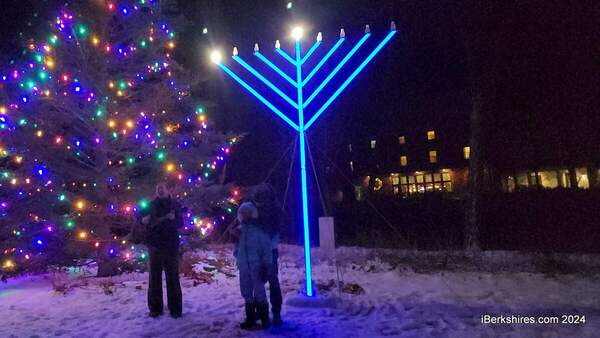



North County Residents Plan Vigil to Keep NARH Doors Open
 Community residents packed into the American Legion on Wednesday night to discuss the impending closure of North Adams Regional Hospital. Community residents packed into the American Legion on Wednesday night to discuss the impending closure of North Adams Regional Hospital. |
NORTH ADAMS, Mass. — Community members protesting the closure of North Adams Regional Hospital and its affiliated health-care practices jump-started planned vigil to circle the lobby Wednesday night.
The brief, quiet protest — and those that follow the next two mornings — are designed to make state officials know depth of support in keeping the facility open. A petition to gain Attorney General Martha Coakley's attention can be found at supportourhospital.org.
The decision by dozens of people came after a two-hour discussion during which employees of Northern Berkshire Healthcare, former patients, relatives and concerned residents spoke of the hardships ahead should the hospital and its emergency room close.
The two hospital unions, 1199SEIU and Massachusetts Nurses Association, along with other groups including the April 4th Coalition, had planned to gather at the hospital on Friday morning, when the emergency room is scheduled to close at 10. But concerns the doors would be shut Thursday night prompted them start a day early.
Not early enough for some.
"There are several hundred people in the room right now, the media are here with their cameras, why aren't we going there right now," said Ed Sederbaum, standing up to rally the crowd to applause.
Many of those packed into the American Legion Hall with years of service at the health-care system could lose their jobs in two days; others began packing up offices after the announcement on Tuesday afternoon that the facility would close.
They spoke of the dangers they felt the closure would cause, the long drives to hospitals north and south for patients in cardiac arrest, for those needing stroke care, for the elderly and the ailing who needed regularly scheduled tests and procedures.
"The outcomes could be totally devastating," said one longtime emergency room nurse, asking the community "to make a stand" for their own safety.
Michele Bruno, a maternity nurse for 30 years, was concerned for some 18 women who will be ready to deliver in the next few days and had nowhere to go.
Others stood to thank nurses for the care — whether it was last week or years ago.
The Rev. David Anderson of First Baptist Church said clergy members had met earlier to determine how they might support what was happening and in "bearing your burden as part of the faith community."
More than a few stressed the need to make state and federal officials understand that the region needed a health-care facility of some kind.
"If worse comes to worse, keep the ER open," said Susan Rose, who'd worked in hospitals in Boston. "Keep the ER. At least that is undebatable."
Anna Gentes, a longtime housekeeper in the hospital, was committed to doing what she could to keep it open.
"I was on the third floor and the management was going into the patients rooms to tell them they were closing the hospital," she said. "It broke my heart. I had to go and hide and cry."
Gentes was set to retire in May, but now "wants to work to save my hospital."
Corinne Case, NBH's tobacco treatment counselor, tried to offer a different perspective of management, who have been taking a beating in employees' remarks.
Case felt administrators had been transparent about the financial issues but maybe hadn't been communicating well.
"Ten days ago I was told at a meeting there was 10 days left of cash," she said. "I feel like there's not a bad guy here there's ... you can be angry here but this needs to be said ... my experience is that all of the management are people who also care and this is preaching to the choir."
1199SEIU's Michael Fadel calmed catcalls, saying the health-care system may not be a democracy but now was a time for their voices to be heard, even if silently. He and others referred to the three-year vigil that saved St. Stanislaus Church in Adams, a "respectful, spiritual" protest.
"The disruption has happened," he said. "We're trying to ease the disruption. But they should know by the vigil that happened a long time in town that you can't just close down an institution that means so much."
Supporters will also meet at 9 a.m. on Thursday morning at the hospital; another group has plans to "occupy" the ER on Friday morning.
Tags: 1199SEIU, hospital, NARH, NBH, protests, vigil,















